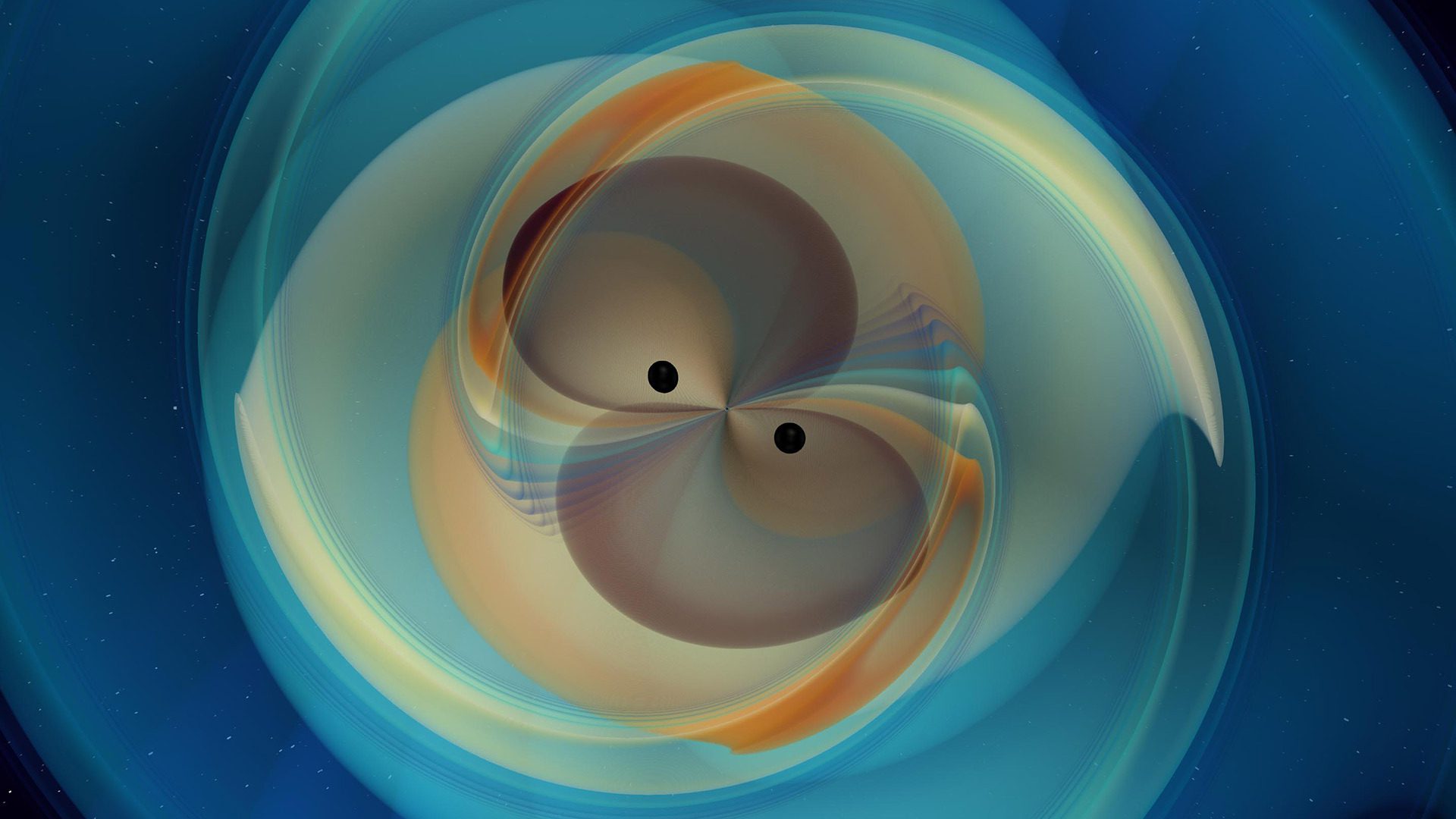- September 03, 2020
- By Kimbra Cutlip
University of Maryland physicists have helped identify merging black holes in new research that could redefine size limits for these collapsed stars.
One of the two black holes the research team detected was one and a half times more massive than any before observed in a collision—possibly because of another, earlier black hole merger—while the other was ordinary in size.
This type of hierarchical combining of black holes had been hypothesized, but the observed event, labeled GW190521, is the first evidence of it happening. The Laser Interferometer Gravitational-Wave Observatory (LIGO) Scientific Collaboration (LSC) and Virgo Collaboration announced the discovery in two papers published yesterday in the journals Physical Review Letters and Astrophysical Journal Letters.
The scientists identified the merging black holes by detecting the gravitational waves—ripples in the fabric of space-time—produced in the final moments of the cataclysmic merger. The gravitational waves were picked up by the twin LIGO detectors in Livingston, Louisiana, and Hanford, Washington, and the Virgo detector near Pisa, Italy.
The sheer mass of the larger black hole in the pair pushes it into unexpected territory, taking into account regular astrophysics processes, said Peter Shawhan, a professor of physics at UMD, an LSC principal investigator and the LSC observational science coordinator.
“It seems too massive to have been formed from a collapsed star, which is where black holes generally come from,” he said.
The larger black hole in the merging pair has a mass 85 times greater than the sun; one explanation suggested by the new papers is that the larger object may have been the result of a previous black hole merger. According to current understanding, stars with masses 65 to 135 times greater than the sun don’t collapse when they die, and therefore, aren’t expected to form black holes.
The gravitational signal announcing the merger, which is only a tenth of a second long, challenged scientists trying to identify its origin, said Alessandra Buonanno, a research professor at UMD and an LSC principal investigator.
“But, despite its short duration, we were able to match the signal to one expected of black-hole mergers, as predicted by Einstein’s theory of general relativity, and we realized we had witnessed, for the first time, the birth of an intermediate-mass black hole from a black-hole parent that most probably was born from an earlier binary merger,” said Buonanno, who also has an appointment as director at the Max Planck Institute for Gravitational Physics in Potsdam, Germany.
GW190521 is one of three recent gravitational wave discoveries that challenge current understanding of black holes and allow scientists to test Einstein’s theory of general relativity in new ways. The other two events included the very first observed merger of two black holes with distinctly unequal masses and a merger between a black hole and a mystery object, which may be the smallest black hole or the largest neutron star ever observed.
“All three events are novel with masses or mass ratios that we’ve never seen before,” said Shawhan, who is also a fellow of the Joint Space-Science Institute, a partnership between UMD and NASA’s Goddard Space Flight Center. “So not only are we learning more about black holes in general, but because of these new properties, we are able to see effects of gravity around these compact bodies that we haven't seen before.”
Topics
Research